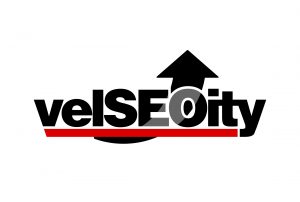Search engine optimization (SEO) is key for driving organic traffic but relying on shortcuts no longer works with regular algorithm updates. True SEO success now requires compliance – adhering to search engine guidelines to deliver optimal user experiences.
This article explains modern SEO compliance, from optimizing page content and technical aspects to building quality links and monitoring progress. We will discuss how to conduct audits, improve content, and refine strategies to stay compliant with search engine updates. Let’s dive into the details.
What is SEO Compliance?
Search engine optimization (SEO) compliance means following the guidelines and best practices set by search engines like Google. This helps ensure your website is easy to find, user-friendly, and ranks well in search results.
There are two key components to optimising your website for compliance:
On-Page Optimization
On-page optimization focuses directly on the content and code on each page of your site.
Elements include:
- Optimising Page Content – The text, images, videos and media on each page.
- Title Tags and Meta Descriptions – Summaries that appear in search results.
- Headings (H1, H2, H3) – Tag and emphasise important content sections.
- Image Alt Text – Provides keywords and context for images.
Technical SEO
Technical SEO involves site architecture and performance to help search engines properly crawl, index, and rank your content. This includes:
- Site Speed Optimization
- Mobile Friendliness
- Search Engine Indexation
- Using Structured Data
- SSL Security
How to Achieve SEO Compliance
Here are some key steps and strategies to achieve and maintain SEO compliance:
-
Conduct an SEO Audit
Use web crawling tools like ScreamingFrog to analyse and identify technical concerns.
You can perform an in-depth content audit with tools like SEMrush to pinpoint areas to improve on-page elements like titles, headings, image alt text, etc. This will show you where to better optimise for keywords and human readers.
Don’t forget to check page speed and mobile friendliness. Faster speeds will improve user experience and SEO.
-
Optimise Page Content
Research target keywords and organically update on-page content to align with top relevant search terms. This includes page titles, meta descriptions, headers, image alt text, and body content.
You need optimised content that will help you rank for valuable searches. Also improve readability and scannability with paragraph spacing, subheadings, bullet points, bold text, and easy-to-consume formatting. This will allow users to consume information easier.
You can enhance pages further by adding structured data markup like JSON-LD and schema.org where applicable to enable rich search results. For example, review products and services that could benefit from more detailed schema. Structured data can generate eye-catching SERP features.
-
Improve Technical SEO
There are several key technical elements to optimise for a compliant site. First, enable caching mechanisms and content delivery networks (CDNs) to significantly accelerate page load speeds across your site. Faster speeds improve user experience and SEO.
Then, compress images, media files, and other resources while deferring non-essential JavaScript loading. You can implement fully responsive design on all pages to optimise for positive mobile user experiences on all devices. Mobile optimization grows your audience reach.
Also, confirm your robots.txt file enables all important pages to be crawled and indexed. Implement canonical tags as needed to prevent duplicate content issues. Duplicate content dilutes your rankings power.
Finally, create and submit an XML sitemap listing all site pages/assets to facilitate complete indexing. This improves discoverability.
-
Build Quality Links
Create truly linkworthy assets like guides, research reports, tools, and interactive content to naturally attract backlinks. Valuable resources will entice links.
Reach out to relevant sites/bloggers to build contextual backlink relationships and placements. You can participate in industry forums, communities, and groups to build your brand presence and earn authoritative links.
These strategies build diversity in linking sources. Avoid manipulative linking schemes, paid links, link exchanges, network-wide links, and other tactics violating guidelines. Focus on building links slowly over time. Shortcuts usually get penalised or devalued.
-
Monitor and Refine
Closely monitoring progress allows you to refine efforts over time. Use Search Console, Analytics, and rank trackers to monitor rankings, traffic, click-through rates, and other KPIs. This data reveals optimization opportunities.
You can set up alerts and follow Google algorithm updates, adjusting your approach accordingly. Algorithm awareness keeps you compliant. Perform recurring spot checks and mini-audits whenever new pages are added or existing pages are significantly updated.
Continuously create and publish fresh, relevant content to stay topically important and gain new keyword/ranking opportunities. New content fuels ongoing growth.
-
Leverage SEO Compliance Services
Consider an SEO partner. Specialised SEO firms and consultants can provide value. They can audit technical and on-page factors versus competitors.
Digital agencies can provide link building outreach at scale and can manage services and deliver progress monitoring, reporting, and support. Let these experts help you tailor strategies for maximum effectiveness and compliance.
Aligning Compliance and SEO
It is crucial to align SEO compliance efforts with your overall website compliance approach. SEO should not operate in isolation – it intersects with broader initiatives like accessibility, security, privacy and more.
Integrating SEO into your website’s culture of compliance provides powerful benefits:
- Users enjoy a seamless experience. Aligning compliance areas eliminates confusing inconsistencies on your site.
- Search engines reward sites that follow best practices across the board. They see unified compliance as better serving users.
- Shared issues that hurt both compliance and SEO are uncovered early. Joint audits spot weaknesses in time to improve them.
- Teams work together to optimise holistically for the user rather than just their area. Cross-functional collaboration breeds innovation.
SEO Compliance Services
As SEO practices advance, many companies leverage specialised agencies and consultants for compliance services and support. These outside experts provide valuable benefits:
- They audit your site’s technical elements and on-page content to identify issues that may be hurting your SEO and compliance. Expert audits spot problems you may miss internally.
- Based on audit findings, they provide custom recommendations to fix uncovered optimization issues. This expert guidance gives you a plan to improve compliance.
- They handle ongoing monitoring and corrections to maintain efforts over time. Instead of you constantly checking for new problems, outside experts proactively prevent issues.
- They conduct ethical link building outreach to earn high-quality backlinks from reputable domains.
- They deliver understandable SEO reports and insights that make it easy to track progress and results. Their strategic consulting makes optimizations smarter.
When evaluating potential SEO compliance service providers, assess their capabilities across key areas:
- Proven technical expertise and on-page optimization skills.
- Ethical link building strategies and outreach capabilities.
- Ability to monitor and adjust to algorithm changes.
- Quality of reporting and communications.
Conclusion
SEO compliance is not just about following rules, it’s about making websites awesome for people while doing things right.
Remember that every little change helps us get noticed more online as we work on making our pages better and fixing technical stuff. Each step moves us closer to success whether we’re improving content or getting good links.
If we need help, there are experts who can show us the way. Together, we can make a big difference and give people the best online experience possible.
Frequently Asked Questions Section
What are some warning signs my site is non-compliant?
- Slow page load times
- Mobile site errors or poor responsiveness
- Thin content lacking substance
- Over-optimization with excessive keywords
How can I check if my site has technical SEO issues?
You can site technical issues using tools like Google PageSpeed Insights and ScreamingFrog to analyse site speed, mobile friendliness, indexing, structured data, security, etc.
What is the most important element for SEO compliance?
Delivering a fantastic experience for site visitors through compelling, usable content and fast performance is the most important element for SEO compliance. Search engines want to serve the best sites.
How often should I audit my site’s compliance?
Experts recommend a full technical/content audit 1-2 times per year.
What are some examples of on-page optimization elements?
On-page optimization elements include title tags, headings, image alt text, page content, and metadata descriptions.
Why is it important to monitor and refine efforts over time?
It’s important to monitor and refine efforts over time because it allows you to track progress, identify areas for improvement, and adapt to changes in search engine algorithms and user behaviours.




